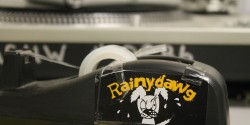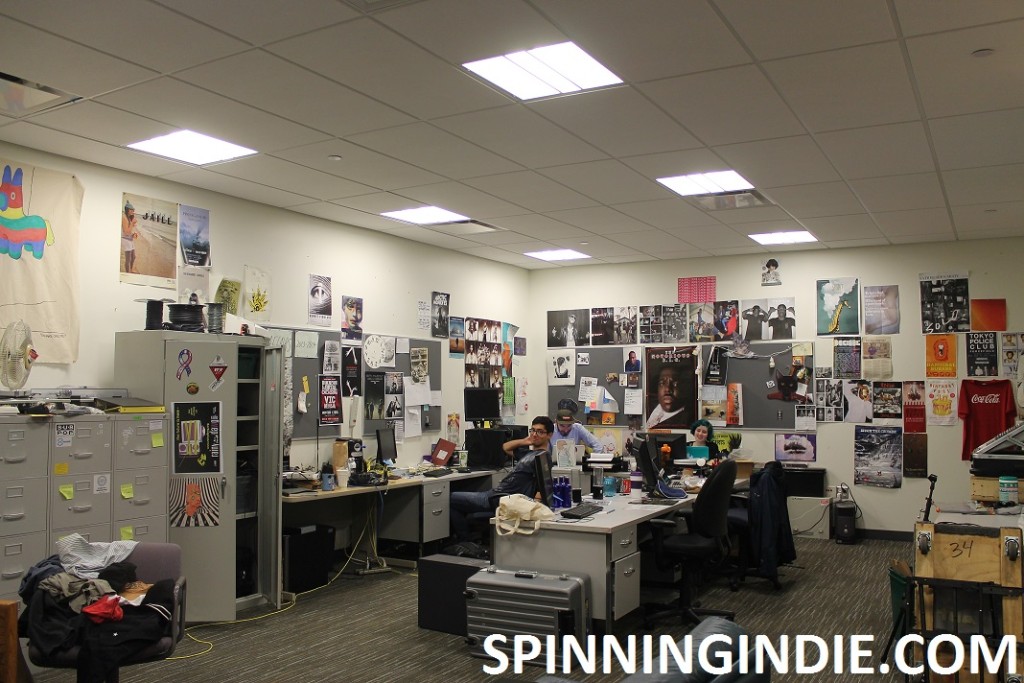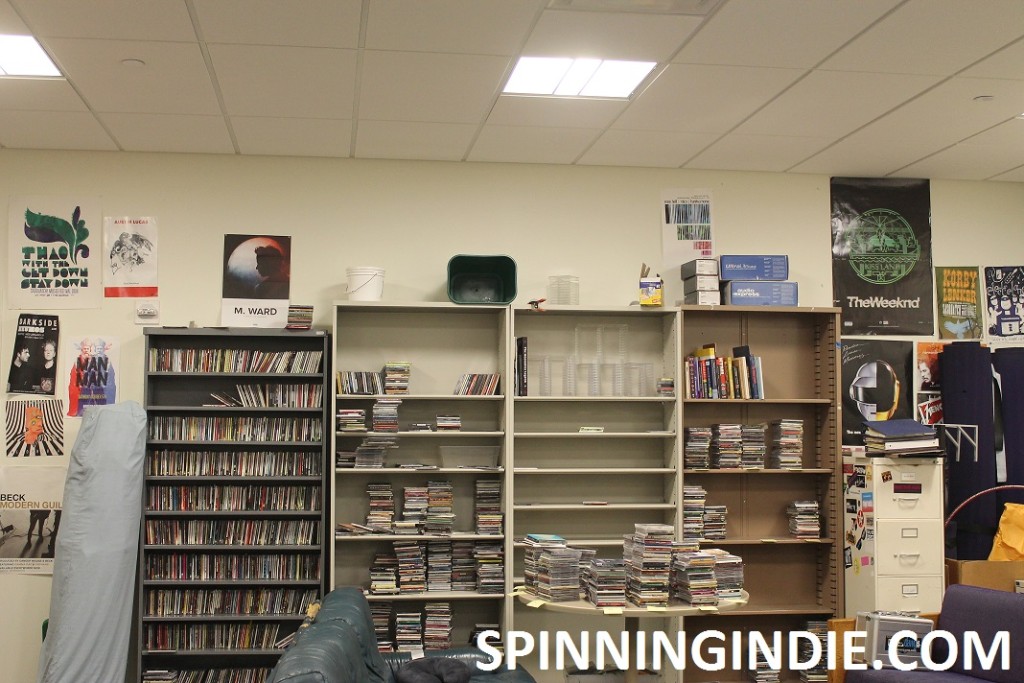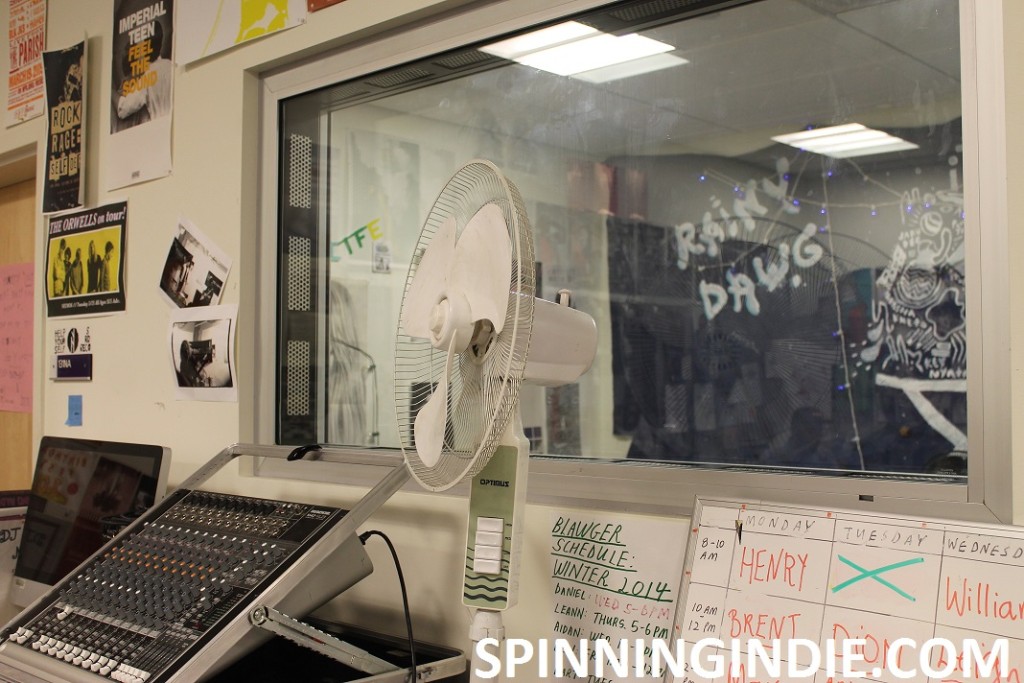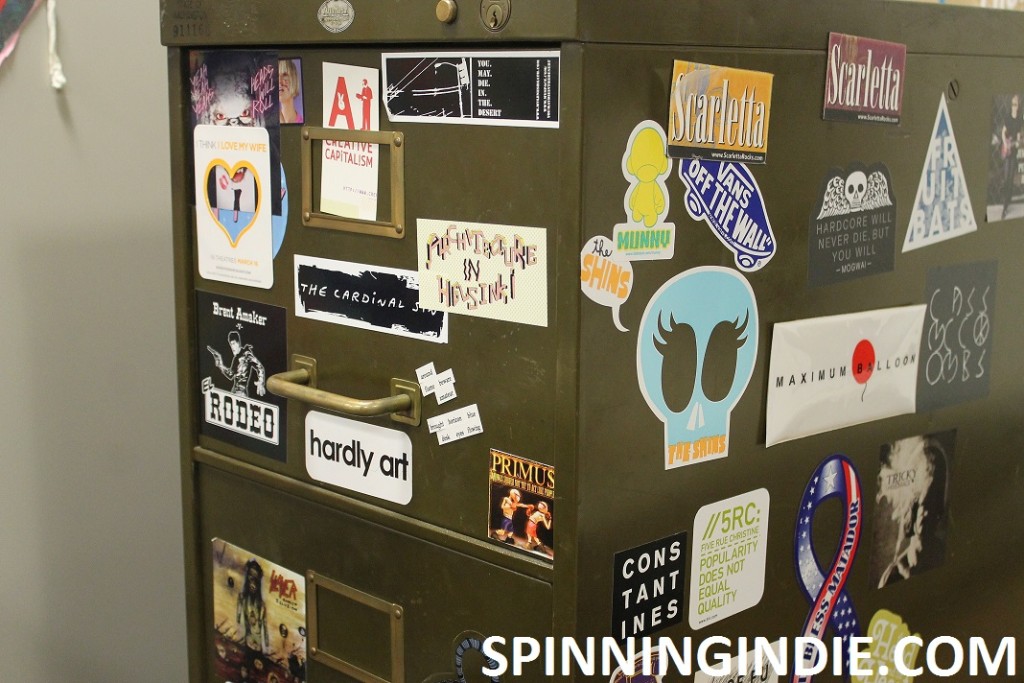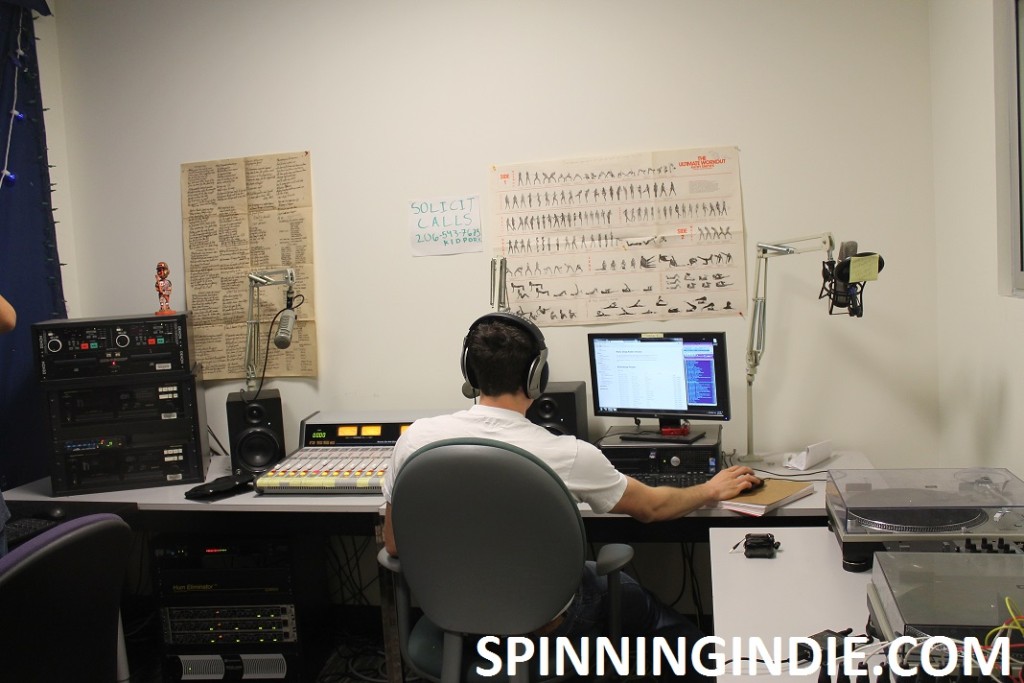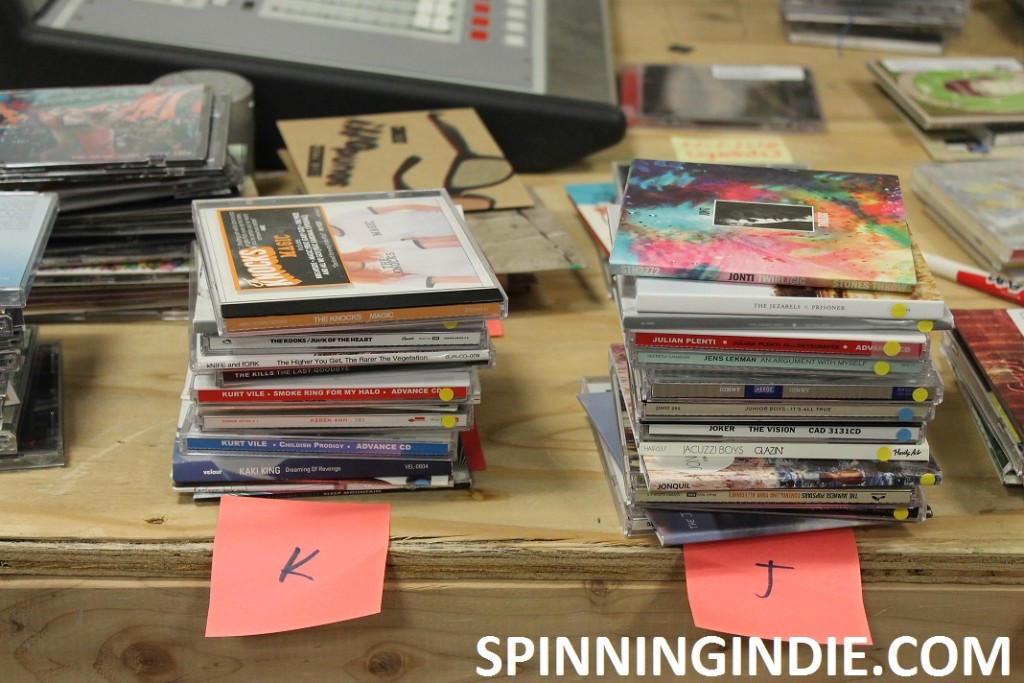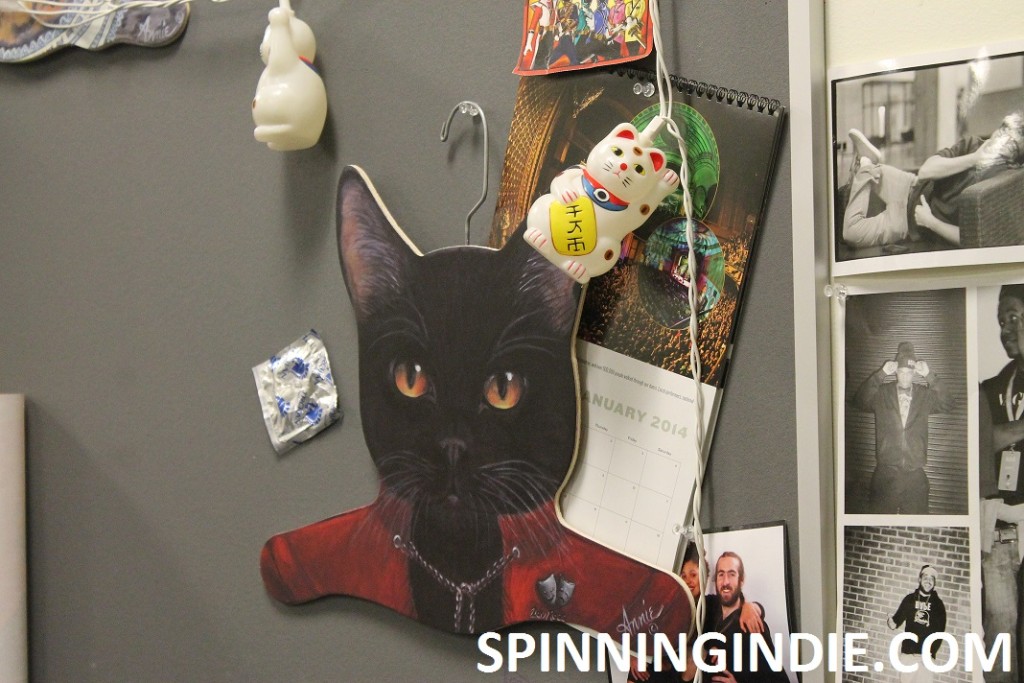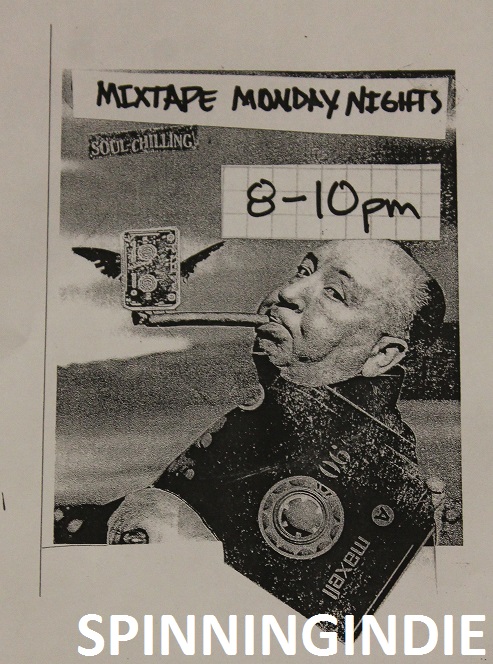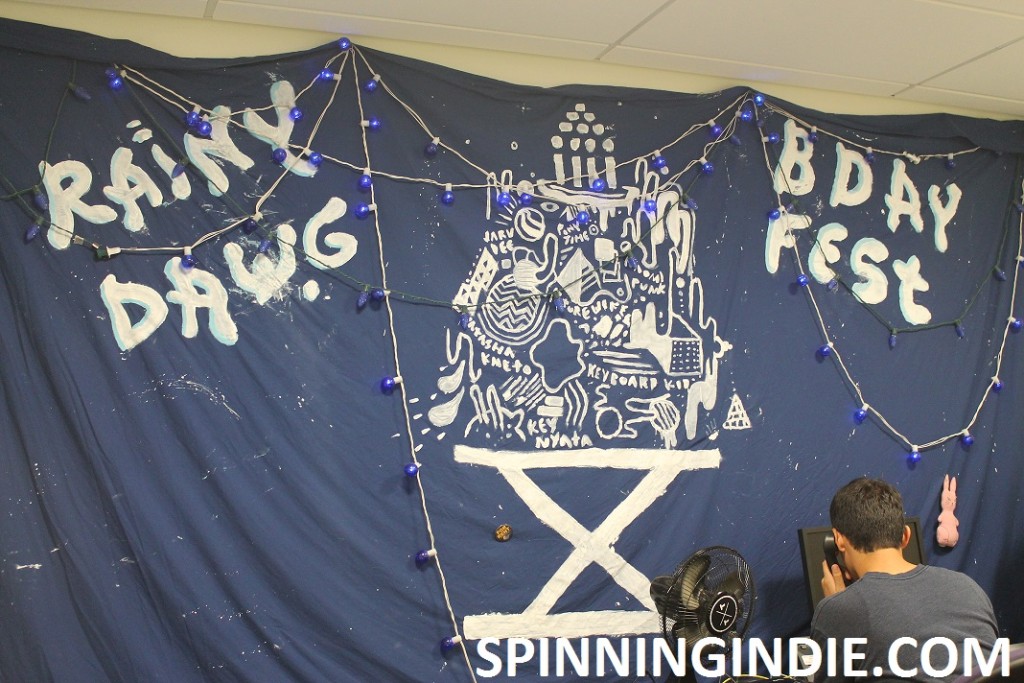On October 22, 2014, I had a busy day of radio station visits in Seattle, Washington. After visiting KEXP, I ventured to University of Washington to see student-run college radio station Rainy Dawg Radio.
Launched in 2001 as an online station, Rainy Dawg Radio helped fill the college radio void at University of Washington after former student radio station KCMU (now KEXP) moved off-campus. Today, Rainy Dawg is located in the Husky Union Building (aka the HUB) on the upper part of the sprawling campus. The station an “enterprise” of the Associated Students of the University of Washington (ASUW) and is nestled in a hallway “suite” full of other ASUW organizations.
When I arrived at Rainy Dawg, I was greeted by General Manager Philip David. David told me that after KCMU changed and moved out, students at University of Washington still wanted to have a radio station on campus. He explained that being online-only has given them a lot of freedom, as they don’t have to worry about FCC regulations.
David told me that Rainy Dawg has around 50 DJs, between 5 and 10 bloggers, and 5 paid student staff. The station is made up entirely of students and to be at Rainy Dawg one has to be at least a part-time student. Each semester they get around 20 show applications and accept between 7 and 10 new DJs.
Live programming runs on Rainy Dawg from 8am to 10pm on Mondays through Thursdays and from 8am to midnight on Fridays and Saturdays. David explained that the station hours are dictated by the building hours. Late at night, when there’s no live DJ in the studio, Rainy Dawg plays a a curated mix of their top 50 album picks. When I visited in the fall semester, the schedule was pretty packed, with only one free, DJ-less hour during the regular station hours.
The studio is fairly spacious and is located just off the station’s open lobby area. David said that most DJs play digital music on their shows and explained that the majority of undergraduates were brought up with streaming media and that not many of them come in to the station with experience playing physical music, including vinyl records.
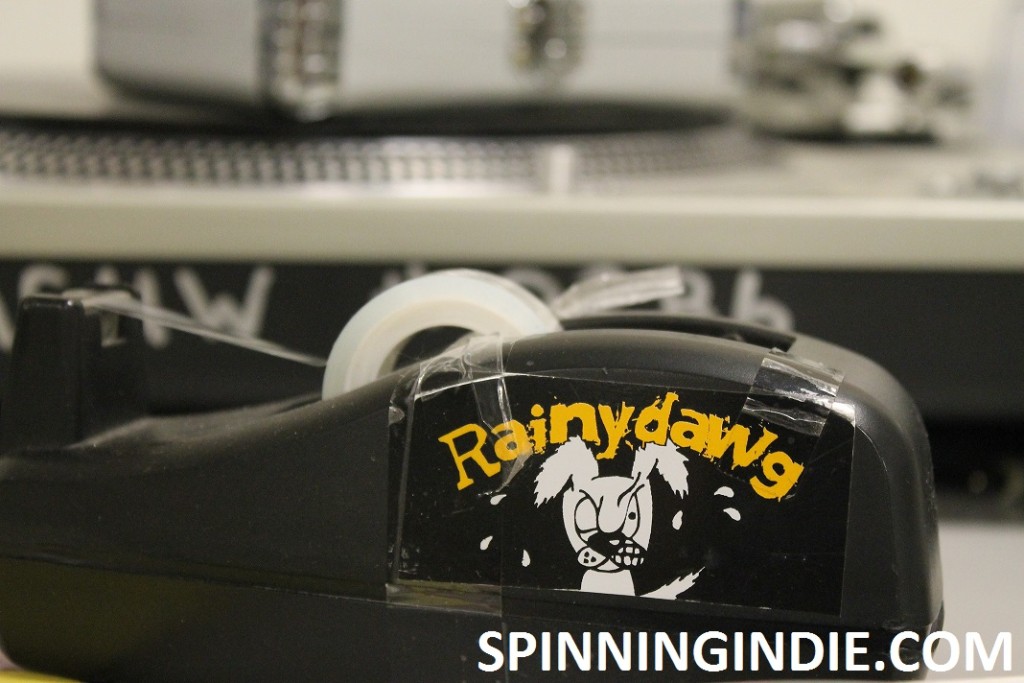
Can you spot the turntable behind the tape dispenser in the Rainy Dawg Radio studio? Photo: J. Waits
However, there are some students, especially graduate students, who do play vinyl (and even cassettes) on their shows and there are even some vinyl-only programs. The studio is equipped with not only a computer, but also turntables, cassette tape decks, and CD players so that DJs can play from a variety of sources.
When I visited, there were piles of CDs in the station lobby. David said that Rainy Dawg was in the midst of a project to reorganize the stacks and said, “the end goal is to digitize it.” When music comes in to the station, the Music Director selects a list of the top 50 albums and digitizes that material for airplay.
As far as the airsound, David said that Rainy Dawg has traditionally had “kind of a local spin,” playing music with a DIY aethestic and from the local punk scene. He told me that it’s shifted a bit and that last semester the music at the station was leaning more towards alternative rock and electronic music. David added, “We try to keep it as open as possible.” Although DJs are required to have a “cohesive” concept for their shows, Rainy Dawg strives to keep things flexible as it’s difficult to “judge good taste,” according to David. Overall, though, David characterizes Rainy Dawg as “underground and DIY and kind of punk.”
David told me that the variety of sounds played on the station include hip hop, indie, English deep house, punk, R&B jams from the early 2000s, and reggae. There’s also some public affairs programing, including a talk show in Mandarin. Beyond radio programming, Rainy Dawg also runs a music blog and helps put on music shows on campus.
Thanks so much to Philip David for taking the time to talk to me about Rainy Dawg Radio. This officially marks my 71st radio station field trip report. I have three more Seattle-area tours to write up, as well as a visit to a college radio station in San Francisco. Peruse my most recent field trips on Radio Survivor and see all of my station field trips on Spinning Indie.

